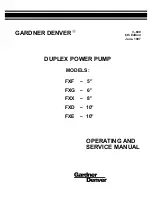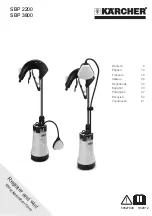
4. Seal the vacuum connection.
5. Start the vacuum pump.
6. Operate the vacuum pump for approx. 5 minutes.
7. Switch off the vacuum pump.
8. Wait approx. 1 minute until the operating fluid has accumulated in the operating fluid separator.
9. Check the fill level.
– The correct fill level is between the Min/Max markings or within the ring mark on the sight
glass.
10. If necessary, fill more operating fluid in case the fill level is incorrect.
5.5 Connecting the oil/water heat exchanger
NOTICE
Vacuum pump damage caused by different cooling characteristics
For applications with short switching cycles or increased ambient temperature, there is a risk of dam-
aging the rotor after switching off temporarily.
► Always switch the oil / water cooling off together with the vacuum pump.
► For checking the cooling water flow, use a solenoid valve that only opens when the vacuum
pump is switched on.
Parameter
Cooling water
Appearance
● filtered
● mechanically clear
● visually clear
● no turbidity
● no sediment
● free from grease and oil
pH value
7 to 9
Carbonate hardness, max.
10 °dH
12.53 °e
17.8 °fH
178 ppm CaCO
3
Chloride content, max.
100 mg/l
Sulfate content, max.
240 mg/l
Carbonic acid content, max.
not detectable
Ammonia content, max.
not detectable
Electrical conductivity, max.
500 µS/cm
Particle size, max.
150 µm
Cooling water temperature
5 – 35 °C
Cooling water flow
150 l/h
Feed line overpressure, max.
2000 – 6000 hPa
Tbl. 5:
Requirements on the cooling water composition
Required material
● Cooling water hose,
ID 19 mm
● Hose clamps
Installation
25/62
















































